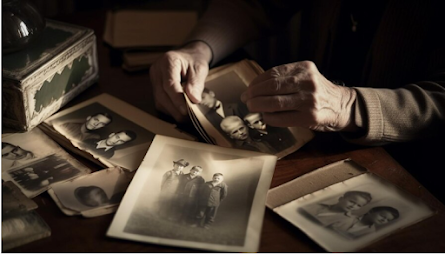A spring board to fly
By Aafiyat Nazar
WHY creative writing? It is generally accepted that when
students have stimulating environments, they can perform better. Apart from the
environment, one of the important aspects, which facilitate learning, is
students’ knowledge of the self. The more students will be aware of their
potential the better they will perform. However, students may not be aware of
their potentials until they get a chance to stretch their minds.
 |
| Photo credit: Freepik |
Involving
students in challenging task, be it curricular or co-curricular are the
effective ways to do so. Creative writing is one of the effective ways to
provide such an opportunity. It also results in improving students' confidence,
thinking, writing and many other skills. It has been observed that students
have not been given opportunity to write without a book or any reference.
Creative writing is an excellent way to broaden a student’s
imagination writes Aafiyat Nazar
The
widespread rote learning system in the most of the public and some of the
private schools in Pakistan can be taken as testimony. This situation is also
prevalent in majority of school in the Northern Areas (Gilgit and Baltistan),
Pakistan, be it government or private. It is evident from the students'
confessions during my visit to their schools and interaction with them, that
they have never written a story on their own. Their teachers too admit the
same.
This
was revealed to me during my visits to more than 30 schools in the Northern
Areas, Pakistan during the year 2006-7. During the support visits to schools, I
had to go to different classes (class 5 to 10) in different schools with the
objective to help students to develop stories on their own. It was surprising
to find that it was a new task for majority of students to make a story.
I
would ask them as “how many of you have created a story on your own? None of
them is confident enough to raise his/her hand. I, then asked them whether or
not they have ever created an oral story? There was complete silence again and
again. Then I tried to elicit their strengths by encouraging them that “you
might have made many stories”. They were not sure that they had ever made
stories. It was evident from the responses that talking about stories was a
difficult task for them. But when I posed questions about their response, as
well as that of other people’s response to a difficult situation created by a
baby’s demand, they came up with different responses. They talked a lot about
different tactics to divert the baby from his/her demands. Some of the students
replied that we tell them that a monster is coming; some said we tell a lie in
order to comfort them and/or divert their attention, etc. These responses were
the basis where upon I facilitated them to embark upon the journey of story
writing. Initially, I asked the students to name famous persons, animals,
villages etc. The students came up with various names. Then, I chose one or two
names from each group of names and wrote them on black board, then told them to
develop links between these names to create a story on their own.
I
also asked them and wherever necessary told them: how to start a story. For
example: Long ago there…Once upon a time… etc. While students were writing
stories, I had to go round from student to student in the class, encouraging
them and giving them feedback individually. After 10 minutes of writing I would
stop them and ask 5 or 6 students to read their stories to the whole class. I
also asked the language teachers to be with me so that they could observe their
students' creative thinking and writing skills, so that they are able to build
on their creative skills.
The
students most of the time came up with very good and interesting stories and
teachers agreed that they had never expected their students to produce such
amusing stories. At the end of each story writing session, I would repeat the
same question as I used to ask in the beginning as “how many of you can write a
story of your own?” In response to that I would always see 100% students
raising their hands.
As
students started writing stories on their own, and delightfully sharing them
with their colleagues, I observed the ecstatic emotions that were evident from
their smiling faces. It also gives me ecstasy for facilitating them to embark
on original first creation.
The writer is currently a student of M. Ed. at a private university in Karachi aafiyat.nazar@aku.edu



Comments
Does freedom of expression mean that a child can abuse his parents, elders and teachers under the guise of freedom of expression?
positive aspects of freedom of expreesion need to be taught to children.
is this possible without knowing the negative side, i wonder?
please let me know
Post a Comment
We welcome contribution and comments from people who believe in equal and inalienable rights. Who also believe that freedom of expression is individuals basic right and that they will not offend others faith(s) and cultural expression(s).